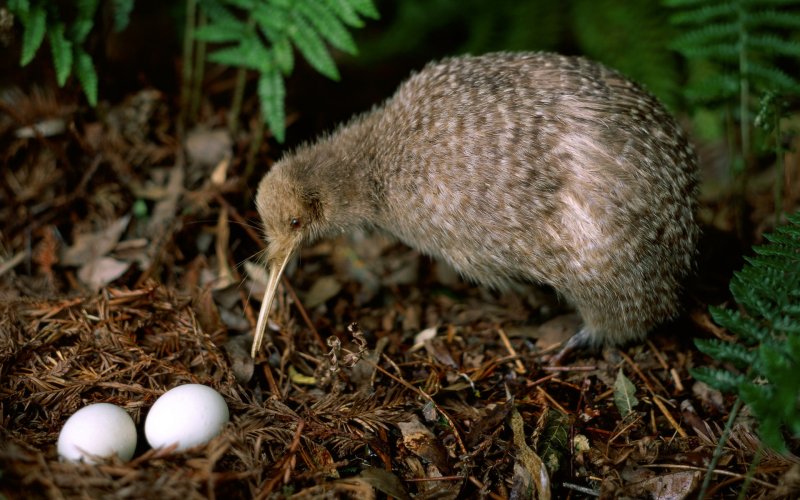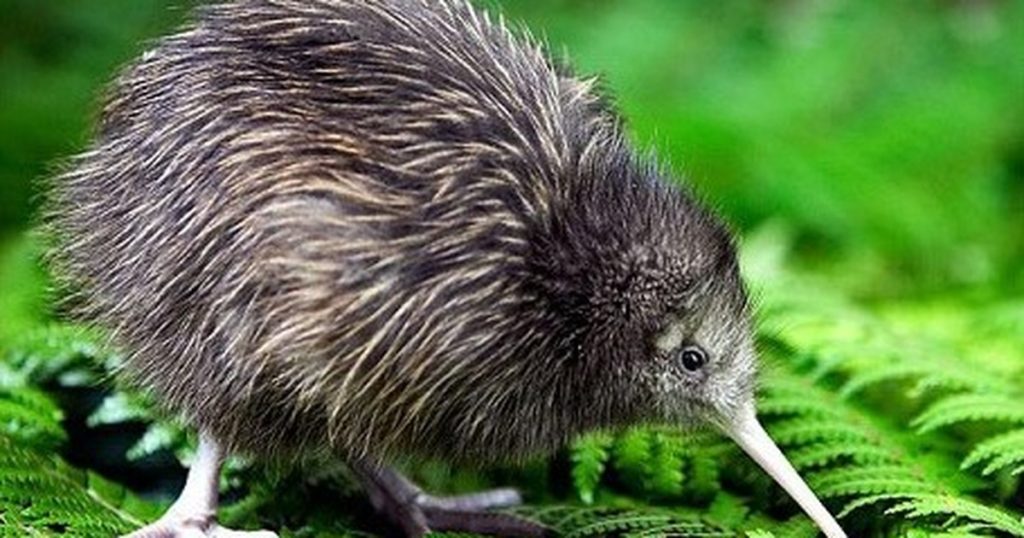Kiwi – A Unique Flightless Bird in New Zealand
The Kiwi is an iconic bird of New Zealand. Unlike any other bird, the Kiwi has unique characteristics and cannot fly. With its distinctive appearance, the Kiwi is not only a symbol of pride for New Zealanders but also a rare bird worldwide. This article helps you understand more about the Kiwi, from its biological features to conservation efforts, each vital to preventing the extinction of this unique bird.

Distinctive Features of the Kiwi
The Kiwi possesses many notable biological features. Unlike flying birds, the Kiwi has thick, soft, and sparse feathers resembling fur rather than typical bird feathers. Its most remarkable feature is its strong legs, which allow it to move quickly on land and dig for food.
- Size and Shape: The Kiwi is small, about 25-45 cm in length, weighing around 1-3 kg.
- Long, Flexible Beak: Its long, thin beak enables the Kiwi to find insects and worms underground.
- Poor Eyesight, Sharp Hearing: The Kiwi has small eyes and weak vision but compensates with excellent hearing and a keen sense of smell.
The Kiwi’s Natural Habitat
Kiwis mainly inhabit forests and grasslands in New Zealand, where an ideal ecosystem offers diverse food sources. They prefer food such as earthworms, insects, and fallen fruit. Kiwis are primarily nocturnal, foraging in the dark to avoid predators.
Today, urban development has significantly reduced the Kiwi’s habitat, threatening the survival of this precious species as natural forests are lost.

Kiwi Behavior and Reproduction – A Unique Flightless Bird
Kiwis typically live in pairs or alone and have a long lifespan, between 25-50 years in the wild.
Their reproduction process is also unique, with female Kiwis laying 1-2 eggs annually. Each egg equals 20% of the mother’s body weight. The father takes on the task of incubating the egg for 75-80 days before it hatches.

Challenges and Conservation Efforts for the Kiwi
The Kiwi population is sharply declining due to habitat loss and threats from animals such as stoats, dogs, and cats. Wild Kiwi numbers are estimated to drop by 5-7% annually, creating a pressing need for conservation measures.
Numerous organizations in New Zealand have established conservation zones and breeding programs. The government collaborates with NGOs to educate the public on Kiwi conservation. Efforts to reduce threats from wildlife and promote captive breeding are also emphasized.
Importance of the Kiwi – A Unique Flightless Bird in New Zealand Culture
The Kiwi is not only a rare bird but a cultural symbol of New Zealand. New Zealanders proudly call themselves “Kiwis,” identifying closely with this bird. Kiwi imagery is prevalent in cultural products, sports, and on national currency.
Conclusion
The Kiwi is a remarkable bird with unique and surprising characteristics. However, Kiwis face significant environmental threats and predatory dangers. Thus, conserving the Kiwi is essential. Conservation efforts are sustaining the Kiwi’s survival, and this action also safeguards a vital cultural symbol of New Zealand.
Read more:
How to Safely Transport Your Cat from Ho Chi Minh City to Koh Samui, Thailand
Vận chuyển thú cưng từ Hà Nội đi Laem Chabang (Thái Lan)
Gửi thực phẩm khô cho du học sinh Châu Âu, sách vở, hải sản khô

